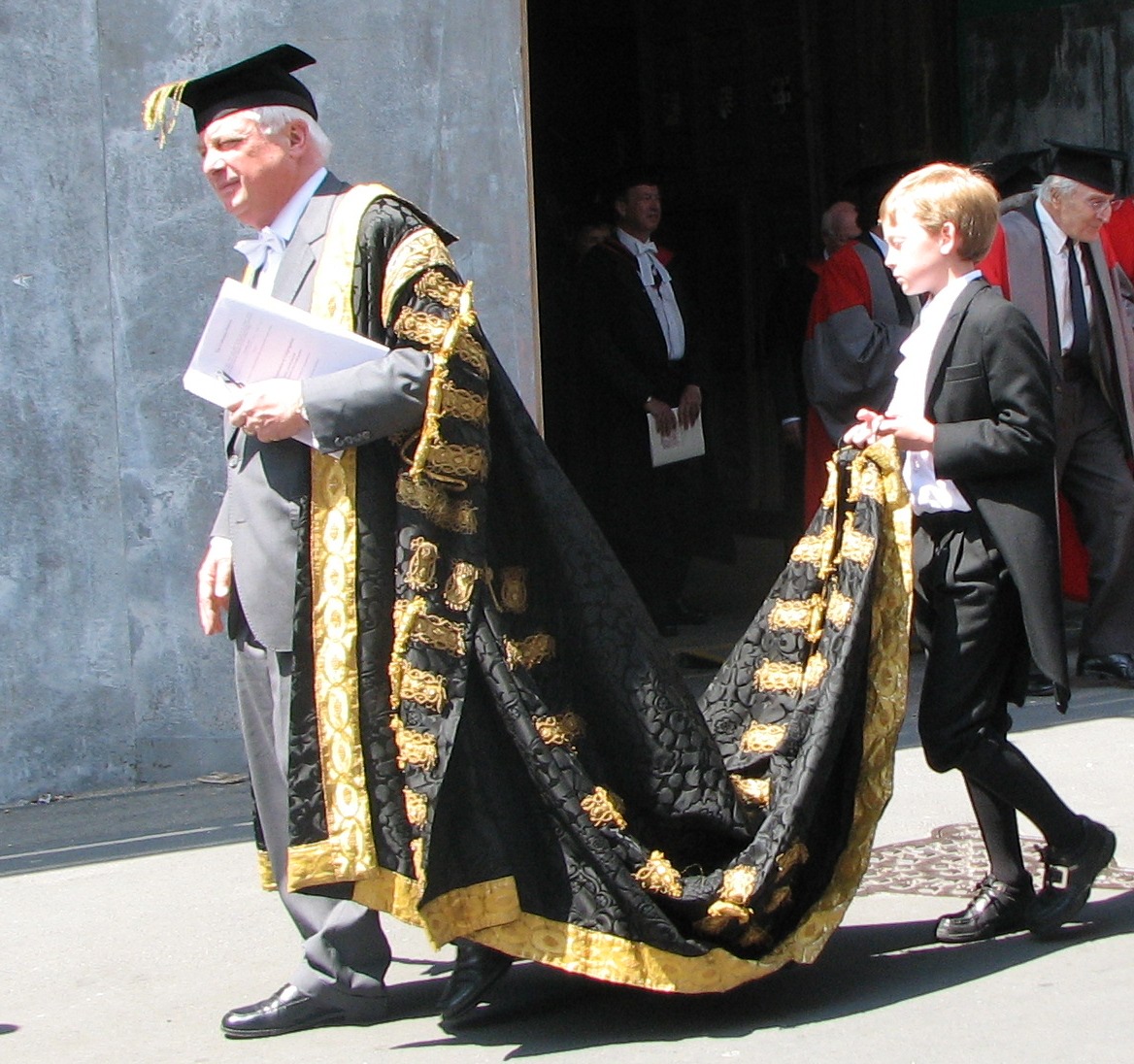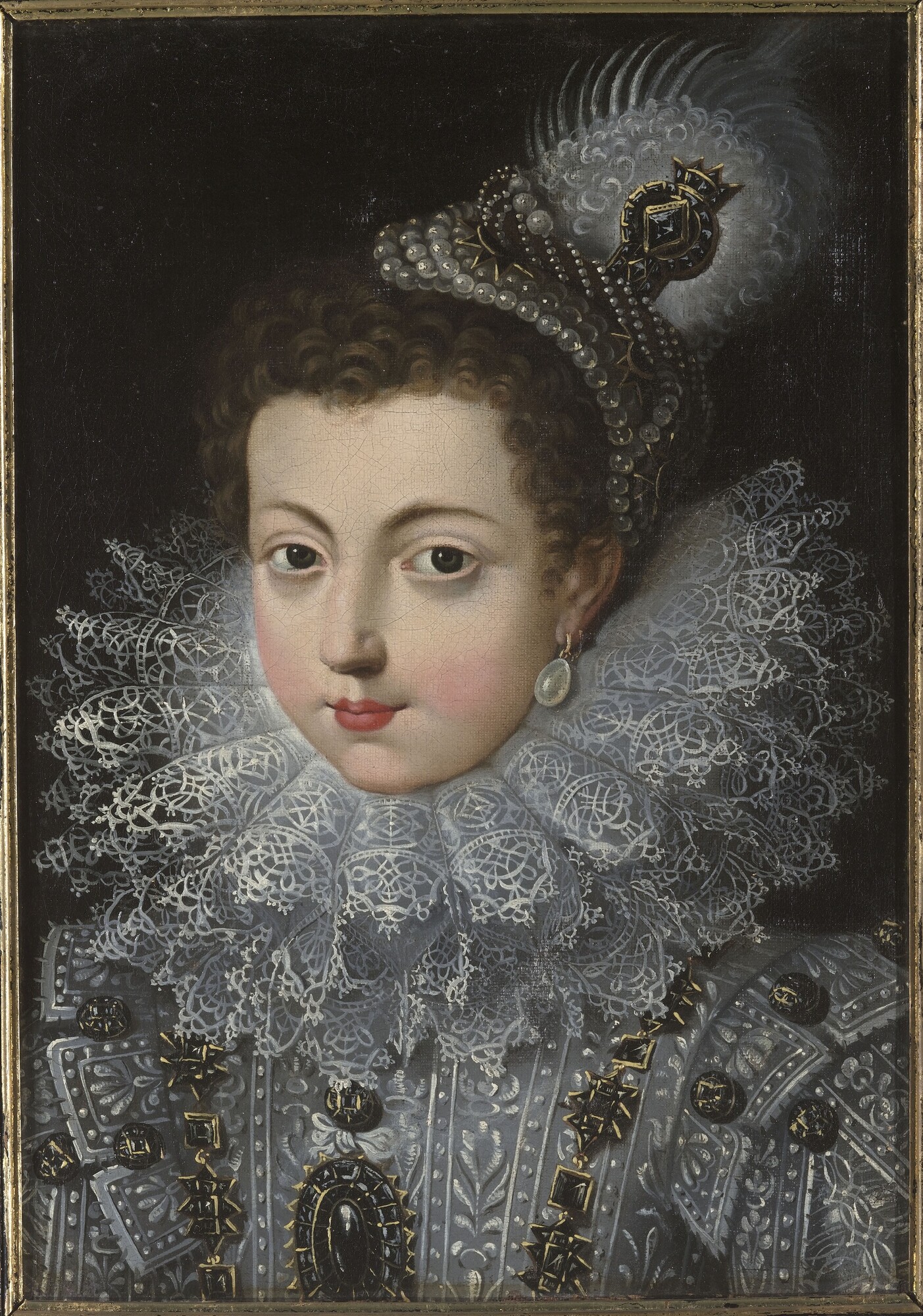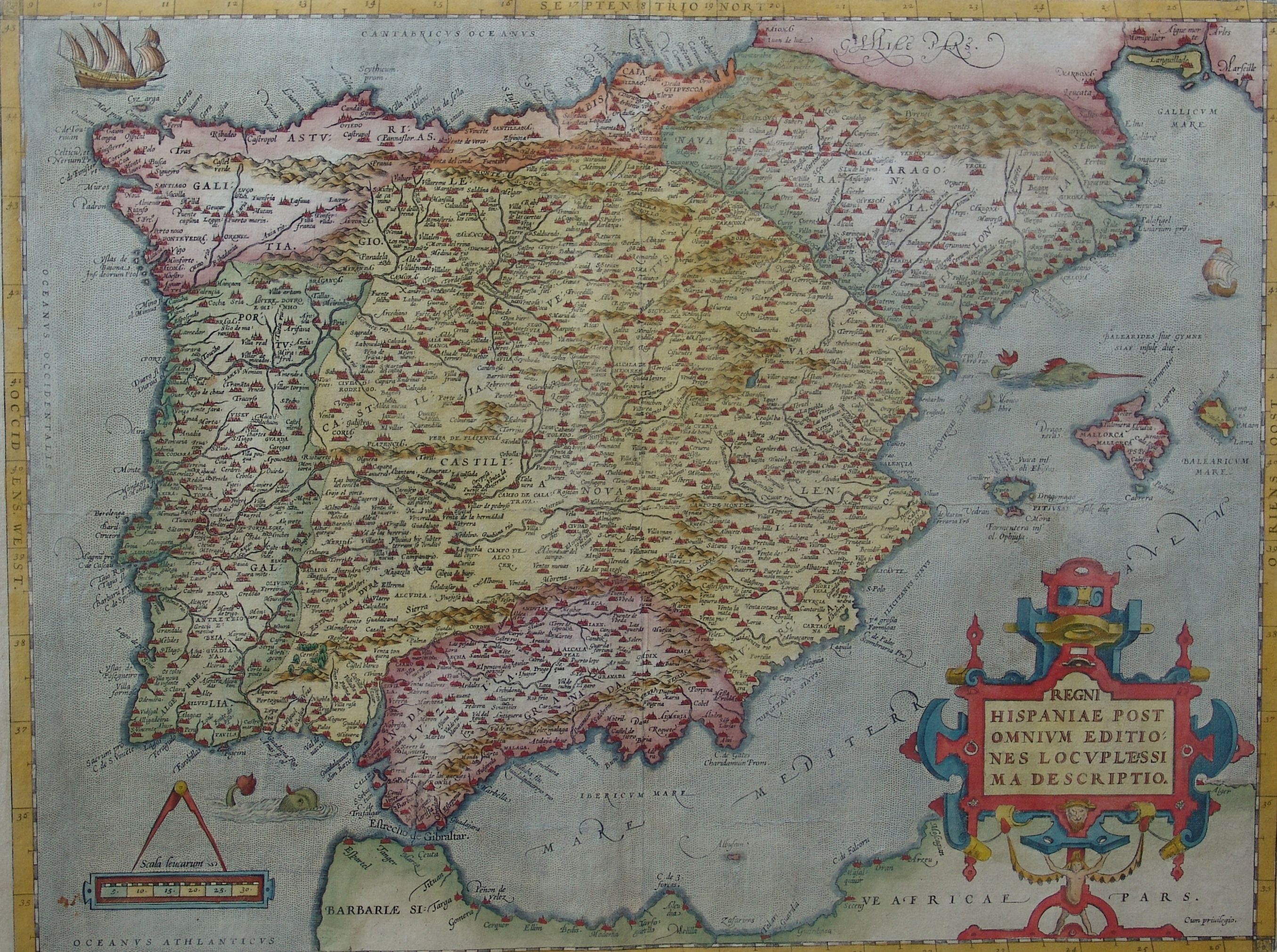|
Luís De Sousa (cardinal)
Luís de Sousa (6 October 1630 in Porto – 4 January 1701 in Lisbon) was Archbishop of Lisbon. He was a major figure of the second half of the seventeenth century, serving as Royal Chaplain and Councillor of State of Portugal, later being created a Cardinal by Pope Innocent XII in 1697. Early life Belonging to the illustrious family of Sousa's, one of the oldest in Portugal, descendants of Martim Afonso Chichorro, an illegitimate son of Afonso III, Luís was the fourth and last son of Diogo Lopes de Sousa (c.1595-27.12.1640), 2nd Count of Miranda do Corvo, son Henrique Sousa Tavares and Mécia de Vilhena, and his wife Leonor de Mendonça (c.1600-24.08.1656), the daughter of João Rodrigues de Sá, 1st Count of Penaguião and Isabel de Mendonça. The other siblings were Isabel (1624), Henrique, 1st Marquis of Arronches and Mecia, who married Manuel Baltazar da Câmara, 1st Count of Ribeira Grande. Luís was born in the city of Porto, on 6 October 1630, since is father was ... [...More Info...] [...Related Items...] OR: [Wikipedia] [Google] [Baidu] |
His Eminence
His Eminence (abbreviation H.Em. or H.E. or HE) is a style (manner of address), style of reference for high nobility, still in use in various religious contexts. Catholicism The style remains in use as the official style or standard form of address in reference to a cardinal (Catholicism), cardinal of the Catholic Church, reflecting his status as a Prince of the Church. A longer, and more formal, title is "His (or Your when addressing the cardinal directly) Most Reverend Eminence". Patriarchs of Eastern Catholic Churches who are also cardinals may be addressed as "His Eminence" or by the style particular to Catholic patriarchs, His Beatitude. When the Grand master (order), Grand Master of the Sovereign Military Order of Malta, the head of state of their sovereign territorial state comprising the island of Malta until 1797, who had already been made a Reichsfürst (i.e., prince of the Holy Roman Empire) in 1607, became (in terms of honorary order of precedence, not in the act ... [...More Info...] [...Related Items...] OR: [Wikipedia] [Google] [Baidu] |
João Rodrigues De Sá
João Rodrigues de Sá (c.1555 – ? ) was the first Count of Penaguião, a Portuguese title. He was succeeded by his son Francisco de Sá de Menezes (1598–1647) and then his son João Rodrigues de Sá e Menezes (1619–1658). His son Francisco de Sá e Menezes (c.1640–1677) was also 1st Marquis of Fontes and his son João Rodrigo de Sá e Menezes succeeded him. His brother João Rodrigues de Sá Menezes (1674–1688) came next and was also 2nd Marquis of Fontes. Under the administration of John IV of Portugal, João Rodrigues de Sá visited the island of Berlengas accompanied by a military engineer to determine the construction of Fort of São João Baptista (Berlengas) The Fort of São João Baptista das Berlengas, or simply known as the Fort of the Berlengas, is located off western coast of Portugal, on the largest island of the archipelago of the Berlengas, in the municipality of Peniche Municipality, Peniche i ....Mariano Calado (1991), p.120 References {{DEFAULTSORT:R ... [...More Info...] [...Related Items...] OR: [Wikipedia] [Google] [Baidu] |
Society Of Jesus
, image = Ihs-logo.svg , image_size = 175px , caption = ChristogramOfficial seal of the Jesuits , abbreviation = SJ , nickname = Jesuits , formation = , founders = , founding_location = , type = Order of clerics regular of pontifical right (for men) , headquarters = Generalate:Borgo S. Spirito 4, 00195 Roma-Prati, Italy , coords = , region_served = Worldwide , num_members = 14,839 members (includes 10,721 priests) as of 2020 , leader_title = Motto , leader_name = la, Ad Majorem Dei GloriamEnglish: ''For the Greater Glory of God'' , leader_title2 = Superior General , leader_name2 = Fr. Arturo Sosa, SJ , leader_title3 = Patron saints , leader_name3 = , leader_title4 = Ministry , leader_name4 = Missionary, educational, literary works , main_organ = La Civiltà Cattoli ... [...More Info...] [...Related Items...] OR: [Wikipedia] [Google] [Baidu] |
John IV Of Portugal
John IV ( pt, João, ; 19 March 1604 – 6 November 1656), nicknamed John the Restorer ( pt, João, o Restaurador), was the King of Portugal whose reign, lasting from 1640 until his death, began the Portuguese restoration of independence from Habsburg Spanish rule. His accession established the House of Braganza on the Portuguese throne, and marked the end of the 60-year-old Iberian Union by which Portugal and Spain shared the same monarch. Before becoming king, he was John II, 8th Duke of Braganza. He was the grandson of Catherine, Duchess of Braganza, a claimant to the crown during the Portuguese succession crisis of 1580. On the eve of his death in 1656, the Portuguese Empire was at its territorial zenith, spanning the globe. Early life John IV was born at Vila Viçosa and succeeded his father Teodósio II as Duke of Braganza when the latter died insane in 1630. He married Luisa de Guzmán (1613–66), eldest daughter of Juan Manuel Pérez de Guzmán, 8th Duke of Medin ... [...More Info...] [...Related Items...] OR: [Wikipedia] [Google] [Baidu] |
Teodósio, Prince Of Brazil
Don Teodósio, Prince of Brazil, Duke of Braganza (''Teodósio de Bragança''; ; 8 February 1634 – 15 May 1653) was the heir apparent son of John IV of Portugal (first king of the House of Braganza) and his wife Luisa de Guzmán. In 1645, he was given the title of Prince of Brazil, a new crown princely position thus created. Also, his father granted him the duchy as 10th Duke of Braganza, presumably after his uncle Duarte died in 1649. Biography He was born on 8 February 1634 in Vila Viçosa and was the heir to the throne of Portugal from 1641 until his death at only 19 years of age. When the prince was 13 years old, he took part in the State Council's reunions. Teodósio's death, on 15 May 1653, due to tuberculosis, caused great unrest in the kingdom. His next brother, the medically and mentally problem-ridden Afonso, succeeded him as Prince of Brazil, Duke of Braganza and heir apparent of the kingdom. Due to mental incapacity and impotence, Afonso would eventually be ... [...More Info...] [...Related Items...] OR: [Wikipedia] [Google] [Baidu] |
Portuguese Restoration War
The Portuguese Restoration War ( pt, Guerra da Restauração) was the war between History of Portugal (1640–1777), Portugal and Habsburg Spain, Spain that began with the Portuguese revolution of 1640 and ended with the Treaty of Lisbon (1668), Treaty of Lisbon in 1668, bringing a formal end to the Iberian Union. The period from 1640 to 1668 was marked by periodic skirmishes between Portugal and Spain, as well as short episodes of more serious warfare, much of it occasioned by Spanish and Portuguese entanglements with non-Iberian powers. Spain was involved in the Thirty Years' War until 1648 and the Franco-Spanish War (1635–1659), Franco-Spanish War until 1659, while Portugal was involved in the Dutch–Portuguese War until 1663. In the seventeenth century and afterwards, this period of sporadic conflict was simply known, in Portugal and elsewhere, as the ''Acclamation War''. The war established the House of Braganza as Portugal's new ruling dynasty, replacing the House of Habs ... [...More Info...] [...Related Items...] OR: [Wikipedia] [Google] [Baidu] |
Page (servant)
A page or page boy is traditionally a young male attendant or servant, but may also have been a messenger in the service of a nobleman. During wedding A wedding is a ceremony where two people are united in marriage. Wedding traditions and customs vary greatly between cultures, ethnic groups, religions, countries, and social classes. Most wedding ceremonies involve an exchange of marriage vo ... ceremonies, a Page boy (wedding_attendant), page boy is often used as a symbolic attendant to carry the rings. Etymology The origin of the term is uncertain, but it may come either from the Latin ''pagus'' (servant), possibly linked to peasant, or an earlier Greek word (''pais'' = child). The medieval page In Middle Ages, medieval times, a page was an attendant to a nobleman, a knight, a governor or a castellan. Until the age of about seven, sons of noble families would receive training in manners and basic literacy from their mothers or other female relatives. Upon reach ... [...More Info...] [...Related Items...] OR: [Wikipedia] [Google] [Baidu] |
Elisabeth Of France (1602–1644)
Elisabeth of France or Isabella of Bourbon (22 November 1602 – 6 October 1644) was Queen of Spain from 1621 to her death and Queen of Portugal from 1621 to 1640, as the first spouse of King Philip IV & III. She served as regent of Spain during the Catalan Revolt in 1640-42 and 1643–44.Diccionario Biográfico. Real Academia de la Historia ''Isabel de Borbón'' Life Childhood  Elisabeth, ''Madame Royale'', was born at the
Elisabeth, ''Madame Royale'', was born at the
|
Madrid
Madrid ( , ) is the capital and most populous city of Spain. The city has almost 3.4 million inhabitants and a metropolitan area population of approximately 6.7 million. It is the second-largest city in the European Union (EU), and its monocentric metropolitan area is the third-largest in the EU.United Nations Department of Economic and Social AffairWorld Urbanization Prospects (2007 revision), (United Nations, 2008), Table A.12. Data for 2007. The municipality covers geographical area. Madrid lies on the River Manzanares in the central part of the Iberian Peninsula. Capital city of both Spain (almost without interruption since 1561) and the surrounding autonomous community of Madrid (since 1983), it is also the political, economic and cultural centre of the country. The city is situated on an elevated plain about from the closest seaside location. The climate of Madrid features hot summers and cool winters. The Madrid urban agglomeration has the second-large ... [...More Info...] [...Related Items...] OR: [Wikipedia] [Google] [Baidu] |
Philip IV Of Spain
Philip IV ( es, Felipe, pt, Filipe; 8 April 160517 September 1665), also called the Planet King (Spanish: ''Rey Planeta''), was King of Spain from 1621 to his death and (as Philip III) King of Portugal from 1621 to 1640. Philip is remembered for his patronage of the arts, including such artists as Diego Velázquez, and his rule over Spain during the Thirty Years' War. By the time of his death, the Spanish Empire had reached approximately 12.2 million square kilometers (4.7 million square miles) in area but in other aspects was in decline, a process to which Philip contributed with his inability to achieve successful domestic and military reform. Personal life Philip IV was born in the Royal Palace of Valladolid, and was the eldest son of Philip III of Spain, Philip III and his wife, Margaret of Austria (1584–1611), Margaret of Austria. In 1615, at the age of 10, Philip was married to 13-year-old Elisabeth of France (1602–1644), Elisabeth of France. Although the ... [...More Info...] [...Related Items...] OR: [Wikipedia] [Google] [Baidu] |
Iberian Union
pt, União Ibérica , conventional_long_name =Iberian Union , common_name = , year_start = 1580 , date_start = 25 August , life_span = 1580–1640 , event_start = War of the Portuguese Succession , event_end = Portuguese Restoration War , date_end = 1 December , year_end = 1640 , p1 = History of Portugal (1415–1578)Kingdom of Portugal , flag_p1 = Flag of Portugal (1578).svg , p2 = Crown of Castile , flag_p2 = Royal Banner of the Crown of Castile (Early Style)-Variant.svg , p3 = Crown of Aragon , flag_p3 = Royal Banner of Aragón.svg , p4 = Habsburg Spain , flag_p4 = Flag of Cross of Burgundy.svg , s1 = History of Portugal (1640–1777)Kingdom of Portugal , flag_s1 = Flag of Portugal (1640).svg , s2 = Habsburg Spain , flag_s2 = Flag of Cross of Burgundy.svg , image_coat = Full Ornamented Coat of Arms of Philip II of Spain (1580-1598).svg , image_map = Philip II's realms in 1598.png , imag ... [...More Info...] [...Related Items...] OR: [Wikipedia] [Google] [Baidu] |
Philip II Of Spain
Philip II) in Spain, while in Portugal and his Italian kingdoms he ruled as Philip I ( pt, Filipe I). (21 May 152713 September 1598), also known as Philip the Prudent ( es, Felipe el Prudente), was King of Spain from 1556, King of Portugal from 1580, and King of Naples and Sicily from 1554 until his death in 1598. He was '' jure uxoris'' King of England and Ireland from his marriage to Queen Mary I in 1554 until her death in 1558. He was also Duke of Milan from 1540. From 1555, he was Lord of the Seventeen Provinces of the Netherlands. The son of Emperor Charles V and Isabella of Portugal, Philip inherited his father's Spanish Empire in 1556 and succeeded to the Portuguese throne in 1580 following a dynastic crisis. The Spanish conquests of the Inca Empire and of the Philippines, named in his honor by Ruy López de Villalobos, were completed during his reign. Under Philip II, Spain reached the height of its influence and power, sometimes called the Spanish Golden Age, and r ... [...More Info...] [...Related Items...] OR: [Wikipedia] [Google] [Baidu] |



.png)






